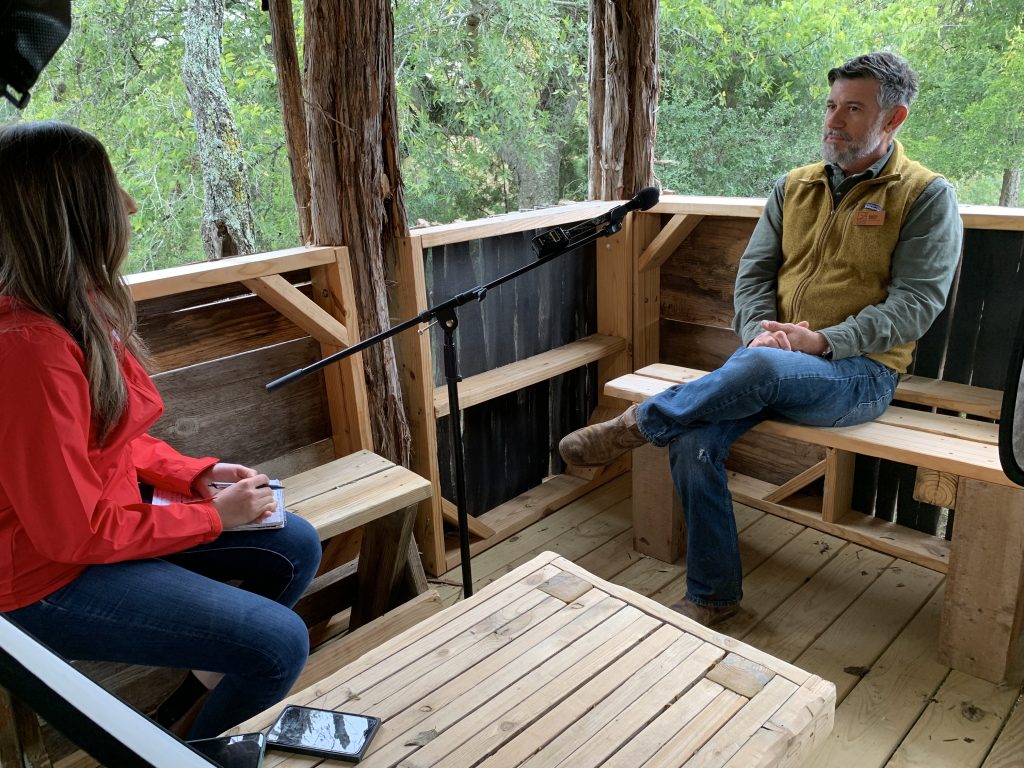Conservation
Signs of the Season: A Two-Part Series on Land Management
By David Touchon
It is that time of year when we welcome the first cool breaths of the north wind, the shortening of the photoperiod, warm cast iron vats of venison chili, and the addition of pumpkin spice to everything that we eat, smell or wear. The squirrels are secretly storing away their winter food cache, winter migrants are making their way through, and the leaves are slowly changing. Fall is here, so we are here to help you prepare your lawns and lands for the cooler months ahead in this two-part series.
At the Cibolo Center for Conservation, our goal is to stay one step ahead of the seasons, and with five fragile ecosystems to maintain, that is no easy feat. The activities listed below are tricks of the trade and lessons learned from our over 34 years of caring for the land, water, and wildlife in this community.
- Lawn: Periodic mowing at a high setting will knock the wool off the yard and eliminate the pesky leaf accumulations. Leaf and grass mulch is excellent for your local flora and micro-fauna. DO IT.
- Rake or Leaf blower? Artistic raking is a thing of beauty and is needed upon the landscape but tread lightly. Steer clear of incessant raking, clearing, and disturbance of a tree’s root flare. Maintain the root flare with organization, mulch, and love. A rake is a powerful tool; too much of it can damage the root flare and cause a bare wasteland under the canopy. In some instances, leaf blowers are not as rough on the soil around the property. I enjoy the plastic leaf rake, which is very forgiving on the backswing.
- Dormant/Dormancy: Things are turning quiet so let them rest for the winter. The summer was tough enough, so check your cut order and cut sparingly. If you did not flag your undesirables, do your research and air on the side of caution. Take special care with the Live Oaks; always have your Prune Seal in your back pocket. Although something seems “dead,” you might be observing a physiological behavior that a plant exhibits to maintain through the cooler months. Ligustrums will keep their leaves, so do your thing.
- The Wood Pile: Time to spruce up the old rotten wood heap and transform it into a fully functioning fuel source. Detrital wood can be added to the winter garden or compost bin. The newer wood stack should be away from the house to prevent a termite/scorpion/centipede invasion and is fire-wise. Chimineas take chunk wood and not whole logs like a fireplace or fire ring, so plan accordingly. Don’t forget to line the chiminea with a layer of sand to prevent overheating the clay structure.
- Lights Out: Take a moment to turn off all exterior lights so you can enjoy some dark sky Hill country viewing. Orion (Betelgeuse) and his faithful dog Canis Major (Sirius) will be dueling with Taurus (Aldebaran) soon enough. Three stars of the greatest magnitude serve as a reference for these constellations. A special shout out to Ed Rogers (since he is awesome) with the Kendall County Friends of the Night Sky initiative. Downward-facing lights that illuminate a particular area are a good thing.

David Touchon is the Land Manager at the Cibolo Center for Conservation. He is a nature enthusiast and former outdoor educator. If you have questions or inquiries about land management that you’d like David to address in the Boerne Star and on the Cibolo’s social media pages, please contact Frances Sanchez at marketing@cibolo.org.
